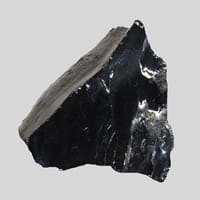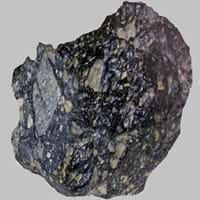Definition
Anthracite is a type of sedimentary rock which is hard and is variety of coal that has high luster
Granite is a very hard, granular, crystalline igneous rock which consists mainly of quartz, mica, and feldspar and is often used as building stone
Origin
Pennsylvania, U.S.
Unknown
Discoverer
Unknown
Unknown
Etymology
From Greek anthrakites, from anthrax, anthrak meaning coal
From Italian granito, which means grained rock, from grano grain, and from Latin granum
Class
Metamorphic Rocks
Igneous Rocks
Sub-Class
Durable Rock, Soft Rock
Durable Rock, Hard Rock
Group
Not Applicable
Plutonic
Other Categories
Coarse Grained Rock, Fine Grained Rock, Medium Grained Rock, Opaque Rock
Coarse Grained Rock, Opaque Rock
Texture
Amorphous, Glassy
Granular, Phaneritic
Color
Black, Brown, Dark Brown, Grey, Light to Dark Grey
Black, Grey, Orange, Pink, White
Durability
Durable
Durable
Appearance
Veined or Pebbled
Veined or Pebbled
Interior Uses
Not Yet Used
Countertops, Decorative Aggregates, Entryways, Floor Tiles, Flooring, Homes, Hotels, Interior Decoration, Kitchens, Stair Treads
Exterior Uses
Not Yet Used
As Building Stone, As Facing Stone, Bridges, Paving Stone, Garden Decoration, Near Swimming Pools, Office Buildings, Resorts
Other Architectural Uses
Not Yet Used
Curbing
Construction Industry
Cement Manufacture, for Road Aggregate, Making natural cement, Steel Production
As Dimension Stone
Medical Industry
In Chemical and Pharmaceutical Industry, Manufacture of Aspirins
Not Yet Used
Antiquity Uses
Not Yet Used
Monuments, Sculpture, Small Figurines
Commercial Uses
Alumina Refineries, Electricity Generation, Liquid Fuel, Manufacture of Soap, Solvents, Dyes, Plastics and Fibres, Paper Industry
Curling, Gemstone, Laboratory bench tops, Tombstones, Used in aquariums
Types
Semi-anthracite and Meta-anthracite
Igneous Protolith Granite, Sedimentary Protolith Granite, Mantle Granite, Anorogenic Granite, Hybrid Granite, Granodiorite and Alkali Feldspar Granite
Features
Helps in production of Heat and Electricity, Used as fossil fuel
Available in Lots of Colors and Patterns, It is One of the Oldest, Strongest and Hardest Rock
Archaeological Significance
Monuments
Not Yet Used
Used
Famous Monuments
Not Applicable
Agia Sophia in Istanbul, Turkey, Blue Domed Church in Santorini, Greece, Blue Mosque in Istanbul, Charminar in Hyderabad, India, Diana, Princess of Wales Memorial Fountain in London, UK, Ephesus in Turkey, Georgia Guidestones in Georgia, US, Hermitage in Saint Petersburg, Khajuraho Temples, India, Mahabalipuram in Tamil Nadu, India, Mysore Palace in Karnataka, India, Signers Monument in Augusta, Georgia, Statue of Liberty in New York, USA, Taj Mahal in Agra, India, Tower Bridge in London, Vietnam Veterans Memorial in Washington, US, Washington Monument, US
Sculpture
Not Yet Used
Used
Famous Sculptures
Not Applicable
Avukana Buddha Statue in Sri Lanka, Lincoln Memorial in America, Mount Rushmore National Memorial in South Dakota, US, The Colossal Red Granite Statue of Amenhotep III in Karnak, Egypt
Pictographs
Used
Not Used
Petroglyphs
Used
Not Used
Figurines
Not Yet Used
Used
Formation
Anthracite forms from the accumulation of plant debris in a swamp environment. When plant debris dies and falls into the swamp, the standing water of the swamp protects it from decay.
Granite is an intrusive igneous rock which is very hard, crystalline and is visibly homogeneous in texture and forms by melting of continental rocks
Mineral Content
Calcite, Clay, Clay Minerals
Amphibole, Biotite, Feldspar, Hornblade, Micas, Muscovite or Illite, Plagioclase, Pyroxene, Quartz
Compound Content
Carbon, Hydrogen, Nitrogen, Oxygen, Sulphur
Aluminium Oxide, CaO, Iron(III) Oxide, FeO, Potassium Oxide, MgO, MnO, Sodium Oxide, Phosphorus Pentoxide, Silicon Dioxide, Titanium Dioxide
Types of Metamorphism
Burial Metamorphism, Contact Metamorphism, Regional Metamorphism
Burial Metamorphism, Cataclastic Metamorphism
Types of Weathering
Not Applicable
Biological Weathering
Types of Erosion
Not Applicable
Chemical Erosion, Sea Erosion, Water Erosion
Grain Size
Medium to Fine Coarse Grained
Large and Coarse Grained
Fracture
Conchoidal
Not Available
Porosity
Less Porous
Less Porous
Luster
Shiny
Dull to Grainy with Sporadic parts Pearly and Vitreous
Compressive Strength
Not Available
Cleavage
Non-Existent
Not Available
Toughness
Not Available
Not Available
Specific Gravity
1.1-1.4
2.6-2.7
Transparency
Opaque
Opaque
Density
1.25-2.5 g/cm3
2.65-2.75 g/cm3
Resistance
Heat Resistant, Water Resistant
Heat Resistant, Wear Resistant
Deposits in Eastern Continents
Asia
Bangladesh, Burma, Cambodia, China, India, Indonesia, Kazakhstan, Malaysia, Mongolia, Pakistan, Turkey, Vietnam
China, India, Iran, Saudi Arabia, Sri Lanka, Taiwan, Thailand, Turkey, Vietnam
Africa
Botswana, Kenya, Morocco, Mozambique, South Africa, Tanzania
Angola, Egypt, Madagascar, Namibia, Nigeria, South Africa
Europe
Belgium, Bulgaria, England, France, Germany, Greece, Hungary, Kosovo, Netherlands, Norway, Poland, Romania, Serbia, Slovakia, Slovenia, The Czech Republic, Ukraine, United Kingdom
Austria, Belgium, Finland, France, Germany, Italy, Norway, Sardinia, Spain, Switzerland, The Czech Republic, Venezuela
Others
Not Yet Found
Not Yet Found
Deposits in Western Continents
North America
Canada, Mexico, USA
Canada, USA
South America
Brazil, Chile, Colombia, Venezuela
Not Yet Found
Deposits in Oceania Continent
Australia
New South Wales, Queensland, Victoria
Not Yet Found










